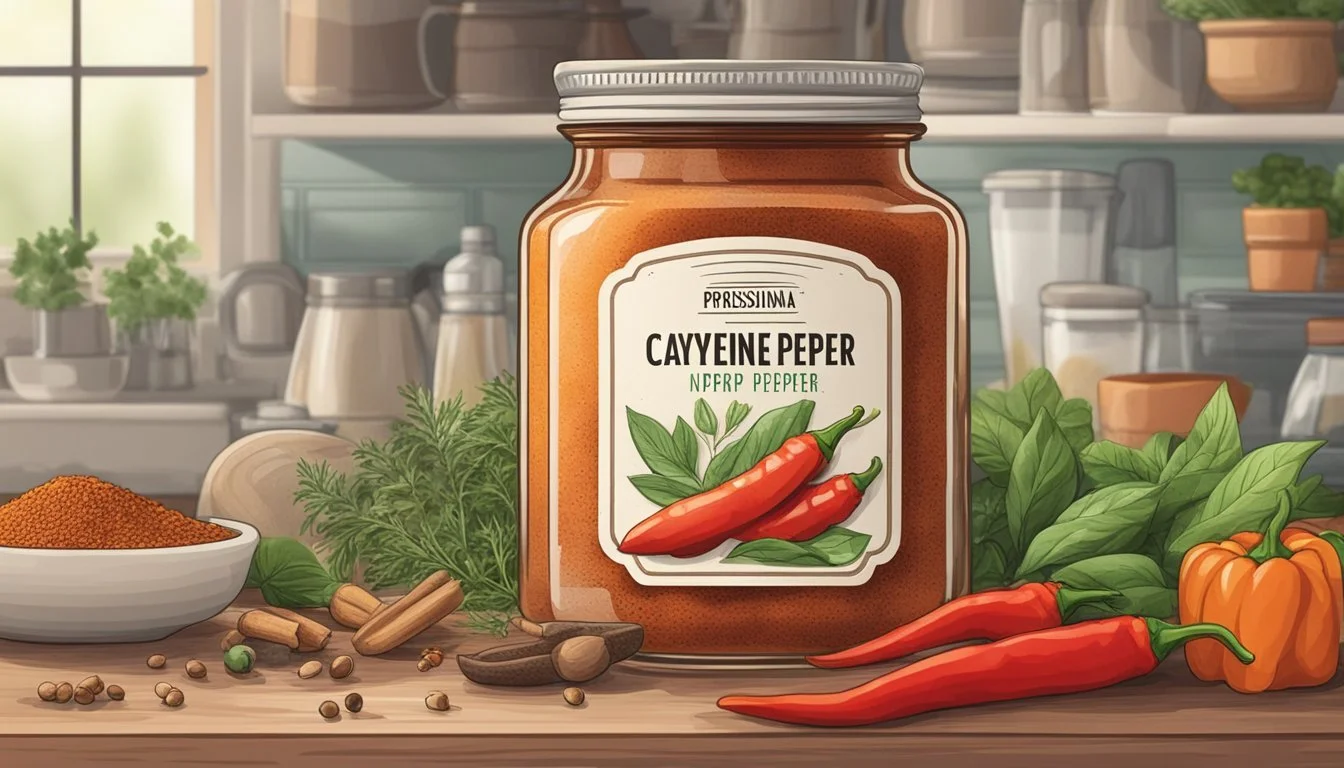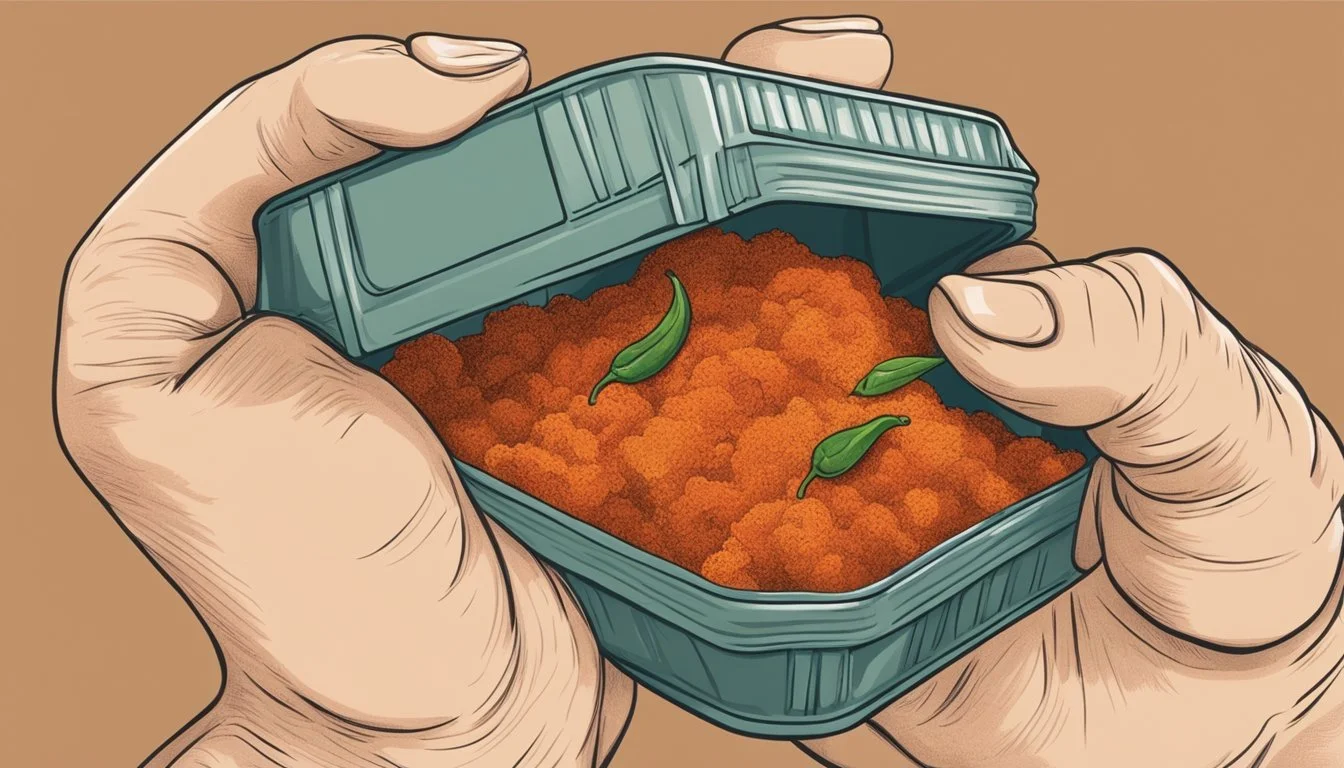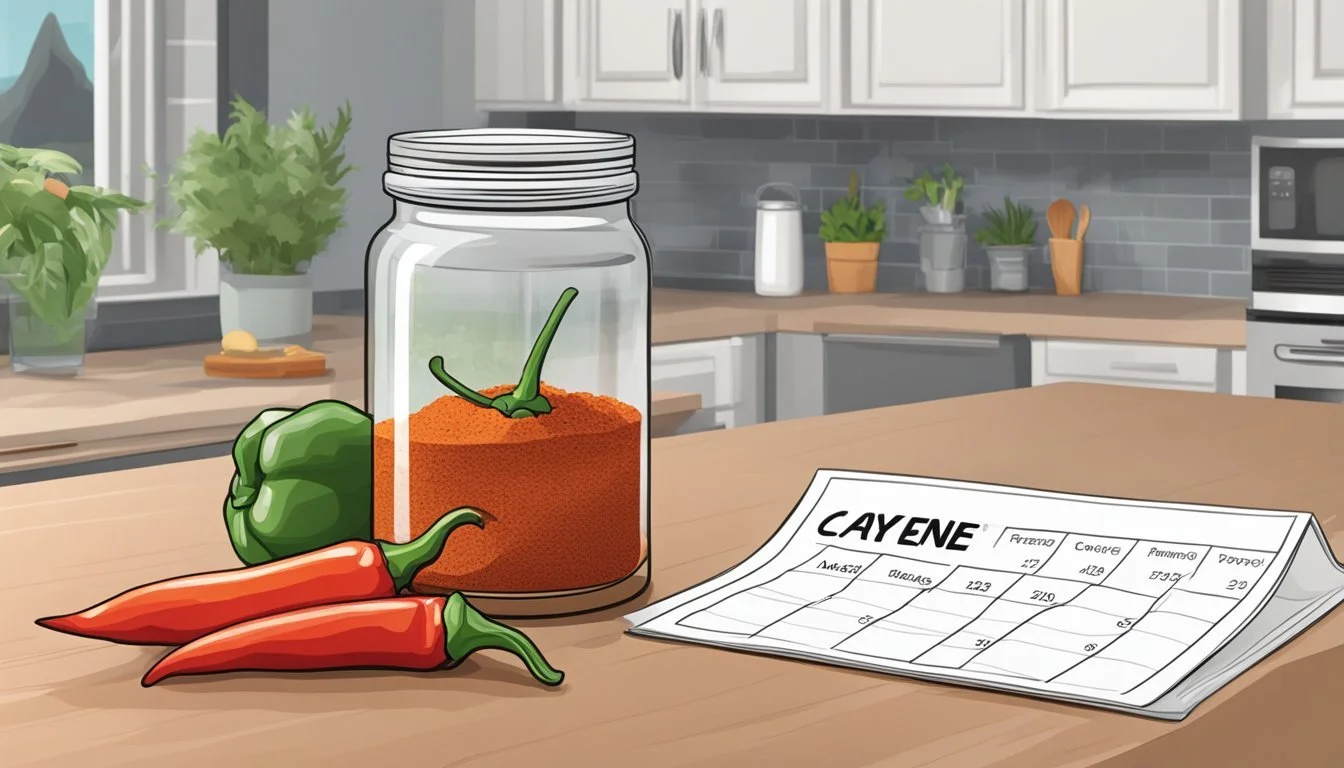Does Cayenne Pepper Go Bad?
Shelf Life and Storage Tips
Cayenne pepper, a staple in many cuisines, has a distinct, fiery flavor. Yes, cayenne pepper can go bad, though its high capsaicin content gives it a longer shelf life than many spices. The quality of cayenne pepper diminishes over time, especially if not stored properly.
The shelf life of cayenne pepper varies based on its form and storage conditions. Ground cayenne pepper typically retains its potency for about 3-4 years when kept in a cool, dark place. Whole cayenne peppers, on the other hand, can last even longer under optimal storage conditions. Changes in color, loss of aroma, and clumping are signs that its quality has declined.
Proper storage is key to maintaining the freshness and potency of cayenne pepper. Keeping it in an airtight container, away from light and moisture, can help preserve its strong, spicy kick. Whether you cook frequently or occasionally, knowing how to store cayenne pepper can keep your dishes flavorful.
Understanding Cayenne Pepper
Cayenne pepper, derived from the dried and ground pods of the cayenne chili, is well-regarded not just for its culinary versatility but also for its potential health benefits. Its bright color, distinctive heat, and health-promoting compounds make it a significant spice in many kitchens worldwide.
Culinary Uses
Cayenne pepper is widely used in various cuisines to add heat and enhance flavor profiles. It’s a staple in dishes such as Mexican, Indian, Cajun, and Asian cuisines. This pepper can be added to soups, stews, and marinades or simply sprinkled over dishes for an extra kick.
In recipes, cayenne pepper pairs well with meats, seafood, and vegetables. It is also used to make hot sauces and season dry rubs for grilling. Some bakers even incorporate it into chocolate desserts to create a spicy-sweet contrast. Its versatility makes it a valuable ingredient in both everyday cooking and gourmet recipes.
Health Benefits
Cayenne peppers are a powerhouse of nutrients with various health benefits primarily attributed to the active compound capsaicin. Capsaicin has antioxidant and anti-inflammatory properties, which can help in reducing inflammation and oxidative stress in the body.
Cayenne pepper is also known for boosting metabolism, aiding in digestion, and improving cardiovascular health. Consuming it can promote better blood circulation and may help lower blood pressure. Research suggests that capsaicin may also assist in pain relief and weight management. However, caution is advised as excessive intake may cause digestive discomfort and potential allergic reactions.
Physical Characteristics
Cayenne peppers are typically red and tapering, with a length of 2 to 5 inches. They possess a smooth yet slightly wrinkled texture. The bright red color is an indicator of its rich capsaicin content, which contributes to its high heat level.
Ground cayenne pepper features a fine, powdery texture and retains the vibrant color. It's important to store it in a cool, dark place to maintain its flavor and potency. Whole cayenne peppers, whether fresh or dried, similarly benefit from proper storage to extend their shelf life and keep their heat intact.
Proper Storage Methods
Proper storage methods can significantly extend the shelf life of cayenne pepper by protecting it from air, light, and moisture. Below are detailed guidelines and techniques to ensure your cayenne pepper remains fresh and potent for as long as possible.
General Storage Guidelines
To maintain the quality of cayenne pepper, storage conditions are crucial. It should be kept in a cool, dry place such as a pantry, cupboard, or drawer, away from direct light and heat sources. Exposure to air and light can degrade the spice's flavor and potency, so it's important to use airtight containers.
Keep the cayenne pepper in an airtight container with a tight-fitting lid to prevent air and moisture penetration. Dryness is key; any moisture can lead to mold growth and spoilage. Ground cayenne pepper tends to lose its potency faster than whole peppers, so using whole peppers and grinding them as needed can be beneficial.
Advanced Techniques
For those looking to extend the shelf life even further, refrigeration or freezing are good options. Seal the cayenne pepper in airtight containers or vacuum-sealed bags to protect it from moisture and air. Label the containers with the date to keep track of freshness.
Freezing cayenne peppers involves washing and drying them thoroughly, removing stems and seeds, and cutting them into pieces. Place the pieces in a sealed container or freezer bag. This method is particularly useful for whole peppers and can preserve their quality for up to a year.
Refrigeration is less effective than freezing but still better than storing at room temperature. Store the pepper in airtight containers to prevent moisture and odor absorption. This method is suitable for short-term storage, keeping the spice fresh for a few months.
Container Options
Choosing the right container is essential for maintaining cayenne pepper's quality. Glass containers offer excellent protection against air and moisture and do not absorb odors. Opt for glass jars with tight-fitting lids for best results. Plastic containers are also viable but ensure they are food-grade and airtight to prevent contamination and moisture ingress.
For long-term storage, vacuum-sealed bags are highly effective. They extend shelf life by removing air, which reduces oxidation and quality degradation. Additionally, keeping these containers in a dark, cool place such as a pantry or drawer further protects the spice from light and heat, ensuring maximum freshness and potency.
Identifying Spoilage
Identifying spoilage in cayenne pepper involves checking for visual changes, unusual odors, and assessing how storage conditions impact its longevity. These factors will help determine if the cayenne pepper is still fit for consumption.
Visual Indicators
Look for changes in color and texture. Fresh cayenne pepper, whether ground or whole, should be vibrant red. If the pepper appears dull, brownish, shriveled, or wrinkled, it is likely starting to spoil.
Mold growth is another clear sign of spoilage. Check for any dark spots or fuzzy growth on the surface. Whole cayenne peppers may also develop wrinkles and shrivel if they are past their prime. Spoiled produce usually exhibits visible deterioration.
Olfactory Signs
Smell the cayenne pepper to detect spoilage. Fresh cayenne pepper should emit a strong, pungent aroma. If the spice smells musty, stale, or has lost its characteristic heat, it has likely gone bad.
Strong odors that seem off or uncharacteristic are clear indicators that the cayenne pepper is no longer good. A musty smell often signifies mold growth or extended exposure to moisture, leading to spoilage.
Storage Impact
Storage conditions greatly affect the shelf life of cayenne pepper. At room temperature, especially in humid environments, cayenne pepper may spoil faster. Storing it in a cool, dry spice cabinet or a fridge can extend its longevity.
In a freezer, whole or ground cayenne pepper can last several months without significant loss of flavor or quality. Ensure the container is airtight to prevent moisture buildup and avoid spoilage. Proper storage practices are crucial to maintaining the freshness and potency of cayenne pepper.
Maximizing Freshness and Potency
Maintaining the freshness and potency of cayenne pepper involves proper storage techniques, regular checks for quality, and timely refreshment of the spice. Attending to these areas will ensure that the spice adds the desired flavor and heat to dishes consistently.
Factors Affecting Shelf Life
Several factors influence the shelf life of cayenne pepper, both ground and fresh. Storage temperature plays a crucial role; keeping the pepper in a cool, dark place like a pantry avoids exposure to heat and light, which degrade the spice.
Airtight containers are essential to prevent moisture and air from seeping in and causing the pepper to lose potency. Packaging materials such as mason jars or food-grade plastic containers work well for this purpose. Keeping the spice dry and stored properly maximizes its flavor and effectiveness over time.
Periodic Checks
Conducting periodic checks helps maintain the quality of cayenne pepper. Color change is a significant indicator; vibrant red cayenne indicates peak quality, while a dull or brownish color suggests loss of freshness. Regularly smelling the spice to ensure it retains its pungent aroma is also important. If it smells dull or musty, it is time to replace it.
Testing a small amount in a dish can further confirm if the spice has maintained its potency. By keeping an eye on these factors, one can ensure the spice remains effective and flavorful.
Refreshment of Spices
To keep the spice collection at peak quality, it's essential to refresh cayenne pepper regularly. Ground cayenne pepper should ideally be replaced every six months to a year, while whole spices and peppercorns can last longer but should still be checked periodically.
Replacing the spice ensures it does not lose potency over time, keeping the seasoning true to its intended flavor profile. Properly managing expiration dates and refreshing the spice ensures consistent quality in culinary creations. Regularly updating the spice collection aids in maintaining the desired taste and heat in dishes, reinforcing the habit of using fresh, potent seasonings.
Tips for Cooking with Cayenne Pepper
Cayenne pepper adds a spicy heat and vibrant color to dishes. By understanding how to properly incorporate it into recipes, home cooks can elevate their culinary creations with ease.
Incorporation in Recipes
Cayenne pepper can be used fresh or in dried, ground, or powdered forms. Fresh cayenne peppers can be sliced or chopped and added to sauces, marinades, and salsas. These fresh slices offer a bright, intense heat. Meanwhile, ground or powdered cayenne is ideal for adding a uniform heat to soups, stews, and spice blends.
When using ground cayenne, it's essential to start with small amounts. The spice can be quite potent, and it's easier to add more than to correct an overly spicy dish. For a balanced flavor, combine cayenne with other spices or dried herbs like cumin, paprika, and oregano. These combinations enrich the overall taste without overwhelming it.
Recommendations for Home Cooks
Home cooks should store both fresh and dried cayenne properly to maintain its potency. Fresh cayenne peppers can last up to five days at room temperature and longer when refrigerated. Dried cayenne powder should be kept in a sealed container away from light and moisture to retain its flavor for up to four years.
When working with fresh cayenne peppers, use gloves to avoid irritation from capsaicin, the compound responsible for the heat. Remember to remove seeds and membranes if a milder flavor is desired.
In preparing dishes, cayenne pepper pairs well with hearty ingredients like beans, meats, and root vegetables. A pinch of cayenne can enhance vinaigrettes, dips, and even pastries, providing a surprising kick.
Substitute Options
In instances where cayenne is unavailable, several substitutes can fill its role. Crushed red pepper flakes offer a similar heat profile but with additional texture. Paprika provides a milder flavor and can be used in larger amounts to achieve a less intense heat.
Other chili peppers such as Thai chili or serrano can replace fresh cayenne. For an alternative spice blend, combining chili powder with a bit of hot sauce can mimic the complexity of cayenne. When substituting, adjust quantities carefully, as heat levels may vary.
Planning Ahead
When considering cayenne pepper, it's essential to think about both purchasing habits and anticipating future consumption needs to maintain its quality and maximize its shelf life.
Purchasing and Usage
When buying cayenne pepper, focus on purchasing quantities that match usage rates. Ground cayenne pepper can maintain its potency for up to four years if stored correctly.
Choose high-quality pepper from reputable sources. This ensures the pepper remains effective throughout its shelf life. Buying in bulk can be cost-effective but requires careful storage to prevent degradation.
Store the pepper in a dark cupboard or another cool, dry place to extend its freshness. Using airtight containers helps protect the spice from moisture and light, preserving its potency.
Anticipating Future Needs
Evaluate how often cayenne pepper is used in recipes. If consumption patterns are high, buying in larger quantities might be beneficial. On the contrary, if cayenne is rarely used, smaller amounts help avoid wastage and the risk of the spice losing its potency.
Consider storing fresh cayenne in the fridge for up to two weeks or freezer for up to six months if planning for long-term use. Ground cayenne requires more careful storage to avoid exposure to air and moisture, ensuring it retains its characteristic heat and quality for longer periods.
By understanding usage rates and planning ahead, it becomes easier to manage cayenne pepper supplies efficiently, ensuring that it remains a vibrant and useful spice in the kitchen.







